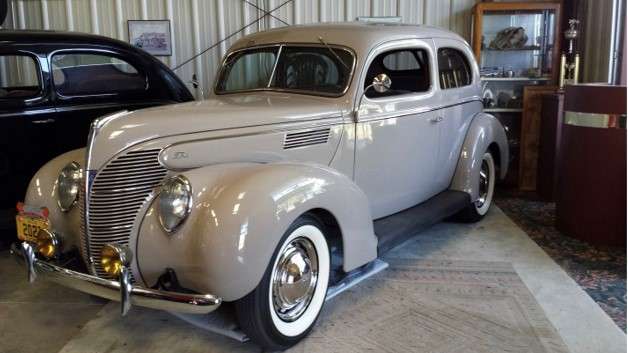(Pictured above is a 1939 Ford Automobile which would have cost around $750 at the time.)
Sugar Hill is a young city in comparison to other municipalities in Georgia and Gwinnett County. Our community will celebrate its Centennial in 2039. Our 84th Birthday will be celebrated this coming March 24.
To say that things have changed a lot in our country, in our state, in Gwinnett County, and in Sugar Hill would be an understatement.
Sugar Hill’s update of its comprehensive plan — Envision 100 — has residents reminiscing about the past but also excitedly looking towards the future.
It is fun to ponder over the future of Sugar Hill and our place, as individuals, in it. It is also fun to look back in history, in our memory, and to compare the past to the present.
In 1939, several big movies debuted — “Gone With the Wind” starring Clark Gable and Vivien Leigh; “The Wizard of Oz” starring Judy Garland; “Mr. Smith Goes to Washington” starring James Steward; and “The Little Princess” starring Shirley Temple.
Nearly 25 movies were released in 1939. And for the first time, patrons of movie theaters were able to watch movies in color through a developing technology and difficult film production process called technicolor.
With no movie theaters in Sugar Hill at the time, residents of our community would have traveled to nearby communities like Atlanta, Buford, Lawrenceville, or Gainesville to watch their favorite actors and actresses.
The average cost to go to a movie, like “Gone With the Wind”, was 23 cents. Less popular movies cost 5 cents to 15 cents per ticket.
In 1949, a drive-in movie theater opened in Sugar Hill. And then for the first time, our residents could watch movies in our own community.
For entertainment opportunities like watching movies, the years 1939 and beyond were exciting. Our community would have experienced a world that was quickly changing and becoming more connected through movies and other entertainment.
Grocery stores were prevalent in Sugar Hill during our early years. Several grocers — like Poole’s Grocery or Buice’s Grocery — provided residents with items beyond what they may have raised or grown on small plots or farms.
The cost of goods in 1939 was a lot less than it is today. A resident of Sugar Hill could buy apples for 3 cents a pound; bacon for 38 cents a pound; bread for 8 cents a loaf; butter for 38 cents a pound; coffee for 13 cents a pound; and milk for 49 cents per gallon.
Luxury goods like cigarettes cost about 14 cents to 20 cents per pack. And chocolate could be bought for 3 cents an ounce. At Parsons & Company, which had stores in Buford, Duluth, Norcross, and Cumming, one could buy the following personal care and housecleaning items:
- Octagon Laundry Soap — two for 15 cents
- Ajax Cleanser — 12 cents
- Palmolive Bath Soap — three regular-size bars for 25 cents
Sugar Hill residents could also buy a Remington Pioneer Typewriter for $14.60 to write an article for the North Gwinnett Voice.

Afterwards, they could go get a “Shampoo and Set” at Hazel Bailey’s Beauty Shoppe located on Cumming Highway for $1.00 before taking an all-expense tour on an air-conditioned train from Atlanta to New York for the World’s Fair for $44.35.
A resident could save some time by catching the train at the Buford Depot, which was just a couple miles away from Sugar Hill.
If you had a little extra wealth in 1939, you could buy a Ford automobile for around $750 and drive the mostly dirt roads between our community and New York. Gasoline for the trip was 19 cents per gallon. And, if you got a flat tire along the way, a tire would cost you around $1.59.
Greyhound buses from Buford only cost $2.10 to get to Warm Springs; or $6.67 to get to Savannah. A whole new world of trade and travel was opening for Sugar Hill residents in 1939.
1939 was an important year for our community. And the early years would be a test of fortitude and endurance for Sugar Hill.
World War II started in 1939 — the very world that was being opened for our community would go through some of its darkest times. Many of our men and women would serve to get our community through the opportunities that lay ahead.
The phrase ‘hindsight is 20/20’ can sometimes be cliché; but looking back on our history as a community, it is clear Sugar Hill has come a long way from its humble beginnings and only has a bright future ahead.




